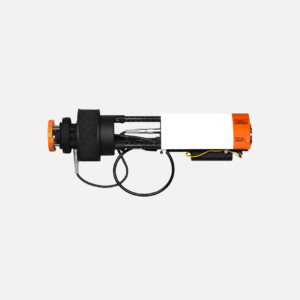Let’s face it: the prospects of doing an annual non-destructive testing (NDT) inspection rarely bring excitement. Because the inspection processes create prolonged downtime, many asset owners only do these for checkbox compliance — and thus fail to realize all the NDT benefits.
But that shouldn’t be your case. As we’ll show in this article, NDT inspection can be a ‘value add’ process at your company with the right strategies for optimizing NDT inspection costs.
The True Costs of NDT Asset Inspection
At first glance, NDT cost is what the service provider quotes or your team’s annual budget. However, neither reflects the indirect inspection costs, which include:
- Scaffolding or access platform construction
- Lifting equipment commissioning
- Planned asset downtime
- Subsequent conditioning and or/repairs
- Labor costs and training expenses
- Elevated insurance premiums (in case of late issue detection)
Many assets require periodic testing, so the real costs of NDT can add up. Adjacent labor, equipment, and time costs can run up to $165,000 for a single 400 ft stack inspection. For multiple assets requiring annual inspections, that can mean over a million in extra spending.
The good news is that NDT inspection costs can be reduced without compromising test quality or reliability.
6 Ways to Improve NDT Costs and Capture More Benefits
Most non-destructive tests are time- and labor-intensive, requiring specialized skills and equipment. Yet, NDT crews often face delays due to surface access, ineffective planning, and subpar scheduling, driving up costs.
To shift NDT from a major cost-center to a cost-saver, consider the following strategies to optimize the speed, quality, and efficiency of NDT processes.
1. Audit Your NDT Inspection Process
NDT inspection processes must first be benchmarked for improvement. An audit helps identify bottlenecks and inefficiencies. It usually involves a methodical analysis of procedures, documentation, and personnel capabilities, based on qualitative and quantitative feedback.
To get quantitative data on your NDT process, conduct time studies first. Measure the duration of each NDT process step (including prep work) to identify bottlenecks. For example, delays may be due to downtime scheduling issues or a lack of available on-site lifting equipment. Cooling off or draining time for assets like industrial boilers or pressure vessels may also affect execution time.
Next, evaluate whether your teams are using the most appropriate NDT methods for each asset type. Regulatory standards for asset inspection typically allow multiple methods. For example, ACI 228.2R-13 and BS 1881-206:1986, allow for concrete structures inspection using different stress-waved methods (e.g., impact-echo testing or ultrasonic through-transmission) and electromagnetic methods (e.g., ground penetrating radar, electrical resistivity measurements, etc).
Consider more resource-, and time-efficient alternatives that deliver the necessary accuracy levels. For example, ultrasonic testing can often replace cumbersome radiographic testing in weld and casting inspections. Visual testing, aided by top camera gear and computer vision algorithms, can replace dye penetrant tests.
Finally, evaluate equipment calibration practices. Is your equipment accurately calibrated for each test surface? Do you have effective re-calibration schedules for every tool? Ultrasonic testing tools should be checked before use and components like the probe beam profile and time base must be recalibrated after 40 hours of operation. Regular equipment servicing minimizes noisy data and false positive rates, preventing missed defects.
Additionally, get direct qualitative feedback from inspection crews. What’s affecting their work the most — scheduling conflicts, constrained access to the test surface, long prep work? Combining hard data in process efficiency with descriptive inputs gives a more holistic understanding of the bottlenecks driving up NDT inspection costs and delays.
2. Take Stock of Your NDT Equipment
When did you last upgrade your NDT equipment? Some decades-old NDT tools are still effective, but newer solutions offer faster readings, richer data, user-friendly interfaces, and greater portability.
For example, compared to traditional ultrasonic transducers, phased array ultrasonic testing (PAUT) tools have higher flaw detection rates. PAUT uses multiple ultrasonic elements for higher precision and better coverage of larger surfaces and complex geometries. It eliminates the need for multiple probe setups and angle changes, speeding up the NDT inspection process. Moreover, PAUT tools provide higher-resolution images and more precise volumetric scans.
Electromagnetic acoustic transducers (EMAT), streamline ultrasonic thickness measurements. Because they rely on electromagnetic induction instead of mechanical vibration, no couplant is required, leading to less surface prep. EMAT also enables faster and more reliable inspection of conductive materials, especially with rough or coated surfaces. You can perform pipe inspections without downtime using Voliro’s inspection drone with an EMAT payload.

Pulsed eddy current (PEC) tools also have a significant edge over conventional probes. They can penetrate through coatings or insulation (saving the hassle of removing these) to detect corrosion and material loss at an early stage. PEC tools are also more sensitive in detecting wall thickness variations and corrosion under insulation (CUI), which accounts for 40% to 60% of pipeline maintenance costs. For example, Voliro’s PEC payload can detect early-stage CUI with up to 100 mm of insulation thickness.
New NDT equipment purchases require capital investments, but they offer good ROI through faster execution and more reliable asset insights.
3. Look Into Drone Asset Inspection
Specialized industrial inspection drones are now a staple among many crews. In the Oil & Gas sector, 16% of companies have integrated drones into visual inspection programs, and three-quarters plan to do so in the future. Among dam owners, 28% use drone-based photogrammetry for condition monitoring.
Courtland Penk, President of Osprey Integrity, notes that drone adoption was a game-changer for two types of inspection scenarios:
- General corrosion-prone industrial assets i.e., those continuously exposed to harsh environments, chemicals, and/or moisture like storage tanks, pipelines, cooling towers, and boilers.
- Assessing the risk of damage from other mechanisms than general wall loss in hard-to-access assets.
“For inspecting assets that are prone to general corrosion, the drone is a big win on efficiency, costs, safety and still maintains the same level of effectiveness as conventional methods,” Courtland shared with Voliro.
Drone infrastructure inspection also drives substantial costs and personnel efficiencies. To access high-rise structures, you no longer need to hire rope climbers, bring lifting equipment, or construct any sort of temporary structures. The drone can be your “eyes” and “hands” at height.
Bilfinger used Voliro technology during a chemical plant inspection. Traditionally, such scenarios involved a bigger crew with rope climbers and specialized lifting equipment, driving up NDT inspection costs. Using the Voliro T drone, Bilfinger could complete the inspection with just two people on site and at 30% less cost for the client due to reductions in labor and time. In another case, Bilfinger could complete a stack inspection in just 1.5 days, down from 25 days, saving the asset owner six figures in expenses.
Effectively, drones can enable more streamlined and frequent screening inspections, providing reliability engineering teams with a deeper understanding of the asset condition.Preliminary data collection helps plan a more in-depth investigation or schedule corrective maintenance.
Thanks to various drone payloads, one UAV can cover multiple inspection scenarios — wall thickness measurements, dry film testing, lighting protection system testing, or CUI detection (in the case of Voliro). Many specialized power line inspection drones, in turn, also feature industrial thermography tools, while oil and gas inspection drones include emission sensors. The configuration versatility reduces NDT costs by saving on labor and equipment.



